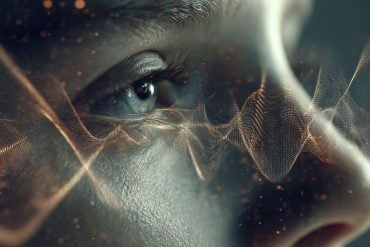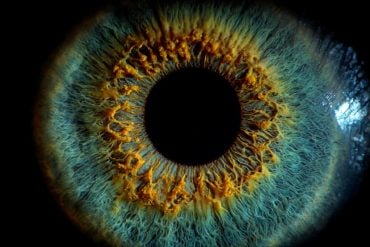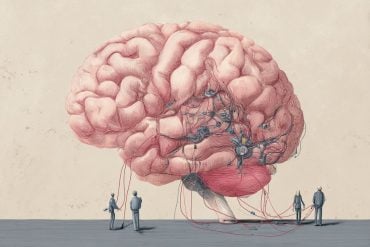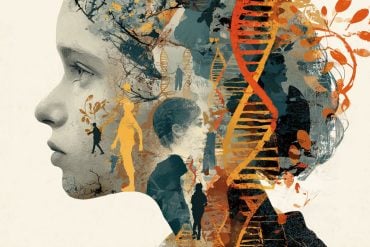Summary: A new study suggests honeybees adhere to the same laws as the human brain when embarking on collective decisions.
Source: University of Sheffield.
Researchers from the University of Sheffield have discovered that looking at honeybees in a colony in the same way as neurons in a brain could help us better understand the basic mechanisms of human behaviour.
The team studied a theoretical model of how honeybees decide where to build their nest and viewed the bee colony as a single superorganism which displays a coordinated response to external stimuli – similar to the human brain. The study concluded that the way in which bees “speak” with each other and make decisions is comparable to the way the many individual neurons in the human brain interact with each other.
Previous research has shown that the brain of humans and other animals follow certain rules known as psychophysical laws. Single brain neurons do not obey the laws, but the whole brain does. Similarly, this study found that even if single bees do not obey these laws, the superorganism, i.e. the bee colony, does.
The study, published in Nature: Scientific Reports, which has fundamentally found that superorganisms may obey the same laws as the human brain, is important because it suggests that the mechanisms that generate such psychophysical laws are not only happening in brains as previously thought. This discovery will enable scientists to better understand the basic principles that generate such laws by studying superorganisms such as bee colonies, which is much simpler than watching brain neurons in action when a decision is being made.
The study also helps us better understand and explore brain laws, including Pieron’s Law, Hicks Law and Weber’s Law.
Pieron’s Law is the law that suggests that the brain is quicker to make decisions when the two options to decide from are of high quality. The brain is slower when the two options are of lower quality. When studying the bee colony, the study found that the honeybee colony is quicker to make a decision between two high-quality nest-sites compared to two low-quality nest-sites.
Similarly, Hick’s Law finds that the brain is slower to make decisions when the number of alternative options increases. In this study, academics found that the bee colony was slower to make decisions when the number of alternative nest-sites increased.
Researchers also compared bee colonies to brain neurons in Weber’s Law. This law finds that the brain is able to select the best quality option when there is a minimum difference between the qualities of the options. The minimum difference is small for low qualities and big for high qualities – there is a linear relationship between quality and minimum difference. In the study, the bee colony model was found to follow the same linear relationship of the minimum quality difference between nest-sites and their average quality.
This law can also be applied to changes in stimulus as well as quality, for example, light, sound or weight. An analogy could be: if you’re holding 1lb of rocks and add another 1lb of rocks, you’ll notice the difference immediately; but if you’re holding 30lbs of rocks and add another 1lb, the change is much less noticeable.
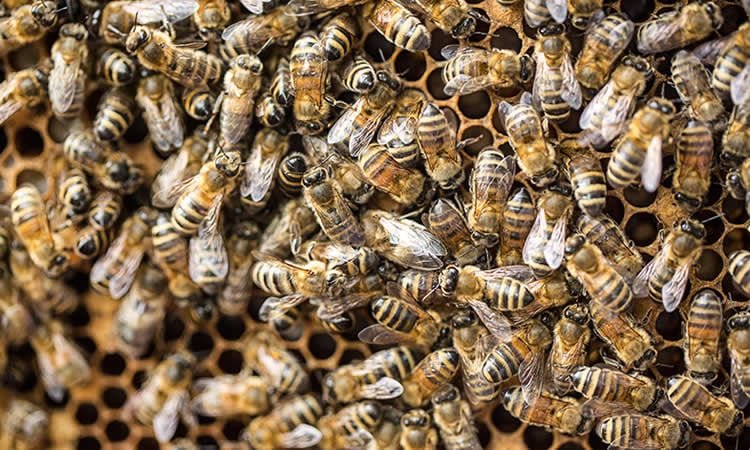
Dr Andreagiovanni Reina, Research Associate in Collective Robotics in the University of Sheffield’s Department of Computer Science, said: “This study is exciting because it suggests that honeybee colonies adhere to the same laws as the brain when making collective decisions.
“The study also supports the view of bee colonies as being similar to complete organisms or better still, superorganisms, composed of a large number of fully developed and autonomous individuals that interact with each other to bring forth a collective response.
“With this view in mind, parallels between bees in a colony and neurons in a brain can be traced, helping us to understand and identify the general mechanisms underlying psychophysics laws, which may ultimately lead to a better understanding of the human brain. Finding similarities between the behaviour of honeybee colonies and brain neurons is useful because the behaviour of bees selecting a nest is simpler than studying neurons in a brain that makes decisions.”
Source: Mary Hickey – University of Sheffield
Publisher: Organized by NeuroscienceNews.com.
Image Source: NeuroscienceNews.com image is adapted from the University of Sheffield news release.
Original Research: Open access research for “Psychophysical Laws and the Superorganism” by Andreagiovanni Reina, Thomas Bose, Vito Trianni & James A. R. Marshall in Scientific Reports. Published online March 12 2018.
doi:10.1038/s41598-018-22616-y
[cbtabs][cbtab title=”MLA”]University of Sheffield “Honeybees May Unlock Secrets of How the Human Brain Works.” NeuroscienceNews. NeuroscienceNews, 27 March 2018.
<https://neurosciencenews.com/honeybee-human-brain-8696/>.[/cbtab][cbtab title=”APA”]University of Sheffield (2018, March 27). Honeybees May Unlock Secrets of How the Human Brain Works. NeuroscienceNews. Retrieved March 27, 2018 from https://neurosciencenews.com/honeybee-human-brain-8696/[/cbtab][cbtab title=”Chicago”]University of Sheffield “Honeybees May Unlock Secrets of How the Human Brain Works.” https://neurosciencenews.com/honeybee-human-brain-8696/ (accessed March 27, 2018).[/cbtab][/cbtabs]
Abstract
Psychophysical Laws and the Superorganism
Through theoretical analysis, we show how a superorganism may react to stimulus variations according to psychophysical laws observed in humans and other animals. We investigate an empirically-motivated honeybee house-hunting model, which describes a value-sensitive decision process over potential nest-sites, at the level of the colony. In this study, we show how colony decision time increases with the number of available nests, in agreement with the Hick-Hyman law of psychophysics, and decreases with mean nest quality, in agreement with Piéron’s law. We also show that colony error rate depends on mean nest quality, and difference in quality, in agreement with Weber’s law. Psychophysical laws, particularly Weber’s law, have been found in diverse species, including unicellular organisms. Our theoretical results predict that superorganisms may also exhibit such behaviour, suggesting that these laws arise from fundamental mechanisms of information processing and decision-making. Finally, we propose a combined psychophysical law which unifies Hick-Hyman’s law and Piéron’s law, traditionally studied independently; this unified law makes predictions that can be empirically tested.



